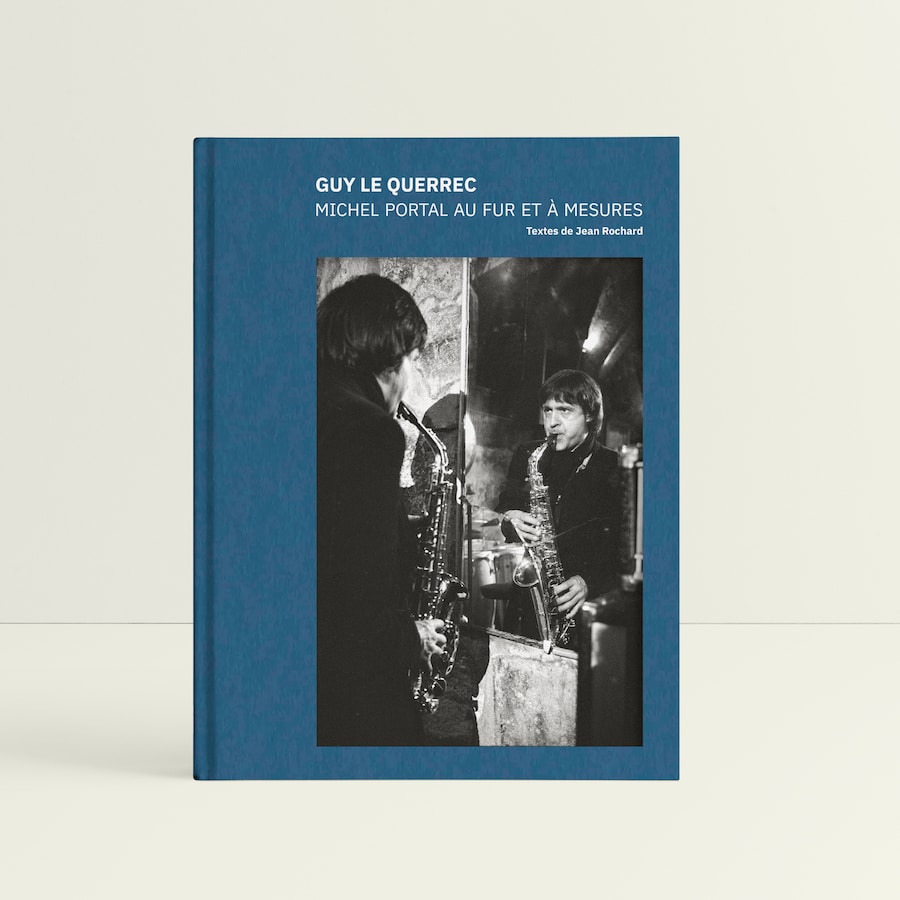
Guy Le Querrec, well known to our services, as he is to anyone with even the slightest interest in jazz photography, is a Breton photographer at heart, born during the last world war. Le Querrec has devoted much of his career to documenting the music scene, capturing intimate and powerful moments at concerts, festivals and on his travels, notably in Africa.
His approach to photographic work in the field of jazz is distinguished by his ability to capture the essence and energy of the music in images. His photographs often reflect the passion and emotion that emanate from musicians during their performances, as well as behind the curtain. Le Querrec has a real talent for capturing the expressions, gestures and connection between artists on stage, creating images that transport the viewer to the heart of this insane music.
In addition to his early involvement with jazz, Guy Le Querrec has also explored other musical genres and covered a variety of cultural events. His photography is marked by a reportage approach, focusing on musicians as “men at work”.
His work has made a significant contribution to the visual preservation of jazz history, immortalizing emblematic moments and legendary figures from the world of music, such as Henri Texier and here Michel Portal.
Guy Le Querrec maintained a close artistic relationship with the clarinettist and saxophonist for some fifty years. As his musical epic unfolded. He captured key moments in Portal’s career, making a significant contribution to the visual archive of his musical life. The book presented here is the most striking testimony to this.
Le Querrec’s photographs of Michel Portal offer an intimate insight into the musician’s life, both on and off stage, for Le Querrec is renowned for his ability to capture the very essence of artists, revealing their personality and passion through his images. In the context of this immense body of work, we can see photographs that illustrate Portal’s captivating stage presence as well as more intimate backstage moments. It’s a piece of jazz history, an important work for the collective imagination.
Like the interplay between jazz musicians, we feel the complicity between photographer and musician, showing the evolution of Michel Portal’s career over the years.
This book is also an important document, helping to preserve the history of jazz and immortalize the exceptional musician Michel Portal.
The remarkable texts by Jean Rochard make this book much more than a porfolio. The layout by the publisher, Les Éditions de Juillet, is also a fine piece of editing and a magnificent showcase.
Mr. Le Querrec agreed to an exclusive interview on the occasion of the release of this reference work.
- Dear Guy Le Querrec, with your book “Michel Portal au Fur et à Mesures” published by Editions de Juillet, you have created a very special tribute to a key jazz musician. This beautiful work reminded me of a catalog raisonné in silence of Michel Portal’s work. What do you think of it?
Now, listen. I welcome everything you say, but let me start with how I got here.
- Of course, but the question lies in the fact that this is not just a report on a concert, but a masterly work on the life of Michel Portal, who is not the first musician to come along either….
Yes, but that doesn’t stop me from telling you how I got here in the first place!
- So, let’s go: how did you get there, dear Guy Le Querrec?
First of all, as a child, I became interested in jazz. Around the age of 12 or 13. And I like to tell the story of how I got there. Back then, I used to buy a few records at Gibert Jeunes. And the first albums I bought were by Sammy Price and Duke Ellington, and then little by little I came to Henri Texier, who over the years has become something like my “High Mountain Guide to jazz”. It was he who kind of whetted my curiosity about jazz. So little by little I found myself – as an aside, I ended up living with a woman who worked at Gudule, a fashion boutique on rue Dauphine – in this so-called privileged neighborhood, right in the heart of St-Germain-des-Prés, where I began to meet jazz musicians. It has to be said that this wasn’t my background to begin with, my father being a railway worker; nothing to do with jazz. So that’s how it all came about.
But you know jazz well enough? ?
- Well, let’s just say I’ve been doing just that, listening to jazz for 12 years. It’s my profession of faith. Even if, like you, I’ve been listening to it all my life, ever since I was a kid.
Sonny Grey Does this ring a bell?
- Yes, of course.
So I started to meet them, to get to know them, to chat with them, a bit from film to needle, I’d say, I was able to start listening to them live..
- But you had started photography at that time?
Hardly. I’d married by a combination of circumstances, let’s say, which led me to become a father at a very young age and to do a bit of photography, but not particularly jazz. But then jazz began to play a major role.
Sonny Grey was the first photo I published, which is also in the book.
And Michel Portal was among the men at the music stands!
That’s when I realized that he was a musician with a certain personality, and I started to get close to him. Although we weren’t intimate at the time, I saw him take his first steps with American jazz musicians passing through Paris. This was quite common at the time.
- Yes, so there we were in March 64, Salle Pleyel, Paris?
That’s it, that’s the first photo in the book. The first historical photo with Portal in the frame. It’s worth noting in this picture that the sheet music almost completely hid the musicians. Now they’re often out in the open.
- Not always… The scores in front (especially in large projects) are a problem for photos, these large black or white rectangles… But in this picture, it’s the alignment that’s interesting. Then those men above. We can’t quite make out who they are?

[March 13, 1964, Paris, Salle Wagram. Jamaican trumpeter Sonny Grey assembled an orchestra for a benefit concert to pay the hospital bills of Bud Powell, who had been living in Paris since 1959 and was suffering from tuberculosis. The pianist, one of the founders of bebop along with Charlie Parker, Dizzy Gillespie and Kenny Clarke, returned to New York in 1965, where he died in hospital the following year. In Sonny Grey’s orchestra, we recognize a number of musicians who were also present in Jef Gilson’s bands, such as trumpeter Bernard Vitet and saxophonist Jean-Louis Chautemps, with whom Michel Portal (center) will play. Luis Fuentes, another Parisian big band regular, is on trombone.]
That’s true, and it’s the starting photograph for this adventure. At the time, I was working in an insurance company to earn my living… It wasn’t easy. Then jazz photography never really nurtured me.
-
- No, It’s still the case, I assure you… Even more so these days.
So, from “film to needle”, also a lot with Texier whom I often photographed, I began my career as a photographer.
- Can we wait for another book on Texier then?
Oh no, because the book I did on Portal took me two years of my life. I wouldn’t have the financial means to do that. The Portal book, at my age, is something of a feat!
But I’ve done a lot of work on Texier’s work and his African tours. Many record books have been published with my photos. Texier / Romano / Sclavis is a trio that has been highly acclaimed in my work through reports in Africa over many years.
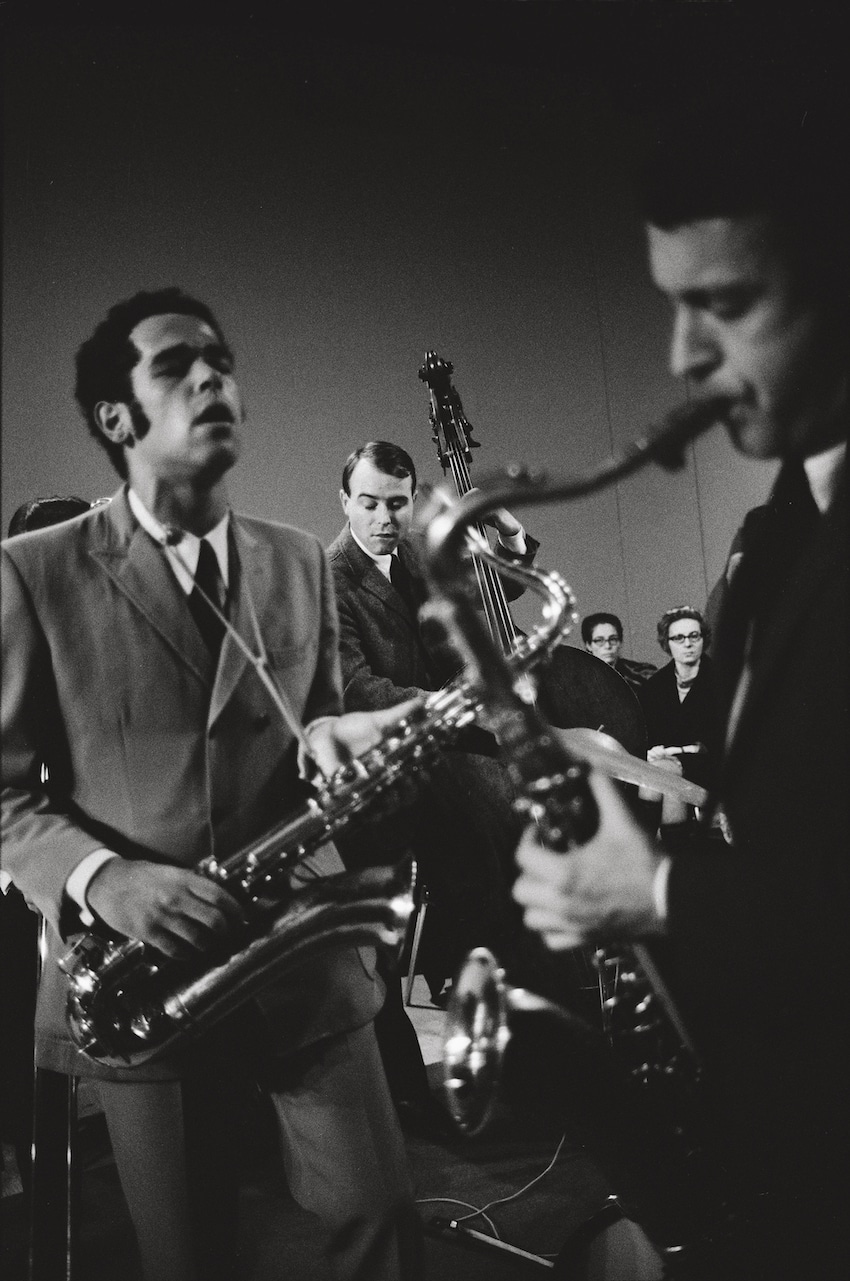
[September 10, 1967, Paris, Musée d’art moderne, Palais de Tokyo. Henri Texier assembles an orchestra with saxophonists Alain Tabar-Nouval and Michel Portal, and drummer Aldo Romano, and Texier and Romano play several stages in Michel Portal’s long career. Twenty-five years later, they were also part of Guy Le Querrec’s Carnet de routes adventure, with Louis Sclavis.].
- Back to the Portal book. Let’s refocus, dear Guy Le Querrec.
The Portal work represents 50 years of photographs! I’m not saying that I watched every one of his releases… So I must have missed a few Portal concerts, knowing that he’s a musician with such an abundant, rich and diverse career.

[February 14, 1969, Paris, Maison de l’ORTF, Studio 105. Double bassist Alan Silva’s Celestrial Communication Orchestra (who also plays violin and cello) rehearses for a concert the following day. Michel Portal is in Silva’s orchestra with flutist and harpist Becky Friend, clarinetist Evan Chandlee, double bassist Beb Guérin and] drummer Aldo Romano.…]
It has to be said that I’ve obviously taken a liking to his music. And it inspired me to create a show, a photos-concert, as I had already done at the Festival de Photos d’Arles with Texier, Portal and Jean-Pierre Drouet, for several years. At the time, it was a great success. We must have done around fifty photo-concerts in all. The musicians would improvise on my photos. Little by little, I found myself with a large number of photos of Portal, which inspired me to write this book.
- On This book is the work of a true photojournalist. You spend years photographing a man at work, in the spirit of the great photo agencies like Magnum, which quickly recognized your talent. And what I find remarkable is that you don’t just show your subject in the spotlight – quite the opposite in fact – but in his day-to-day work, waiting, often alone, or rehearsing or concentrating in places like dressing rooms, corridors or rooms that aren’t exactly glamorous. Why this choice?
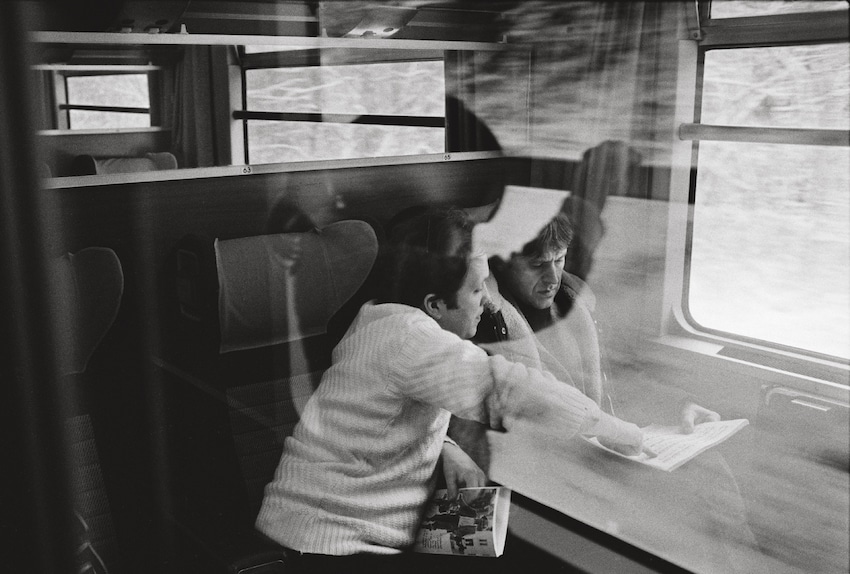
That’s the way I look at life. It’s what suits me and suits me well. The difficulty is that it sometimes takes time to be really accepted in musicians’ lives… I must admit that I’m someone who has been known and recognized for my work by musicians among others, in the jazz milieu, although I’ve also had other photographic activities.
 But this book is an account, a story that I tell, as I have done in other fields, like my book on Brittany, which tells the story of a country, a region. I’m very attached to Brittany. I’m often credited with a talent for storytelling. An images storyteller.
But this book is an account, a story that I tell, as I have done in other fields, like my book on Brittany, which tells the story of a country, a region. I’m very attached to Brittany. I’m often credited with a talent for storytelling. An images storyteller.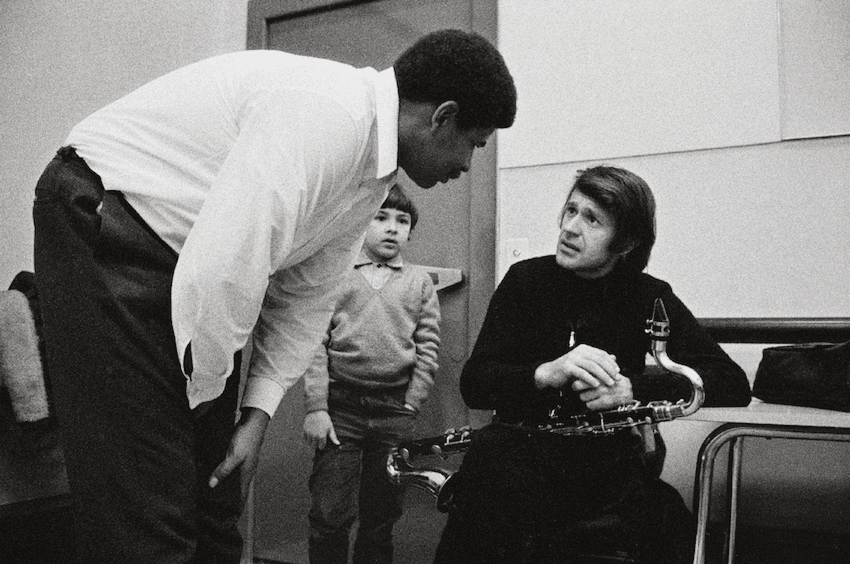
– Yes, this is truly the work of a photojournalist, showing not just the action, the scene, but the lives of these men at work, whose work, for people like Michel Portal, is of course to compose and play music. That’s what you get from reading this book.…
That’s absolutely what was important to me, and we’d already done a little white paper on the subject called “Photoscopie” with Portal. It was around this time that I began to be more accepted, closer to him. Because it might seem strange for someone to always be followed by a guy who’s always photographing you! Michel Portal being Basque, I told him that I was someone who always stuck to his tail…. (laughs) (TN. collé à ses basques in French and Basque is the south Ouest region of France)
- You’re a stickler-photograph, especially with this Basque guy! Having met Michel Portal on several occasions, I’m sure he appreciated the deadpan humor that made him so famous..
Yes, we exchanged a lot of words and moments on many subjects. He didn’t always see the point of me photographing him in this or that situation. In fact, he had a phrase that I’ve kept in my memory – it was a response to radio reporters who remarked on my repeated presence clinging to his heels:
– Don’t you mind having someone following you all the time? (asked the radio interviewer)
– No, you know,” replied Portal, “when I hear music, it always makes me want to play. Well, Le Querrec, when he sees a situation, feels the need to photograph it, so he does, and I don’t mind…
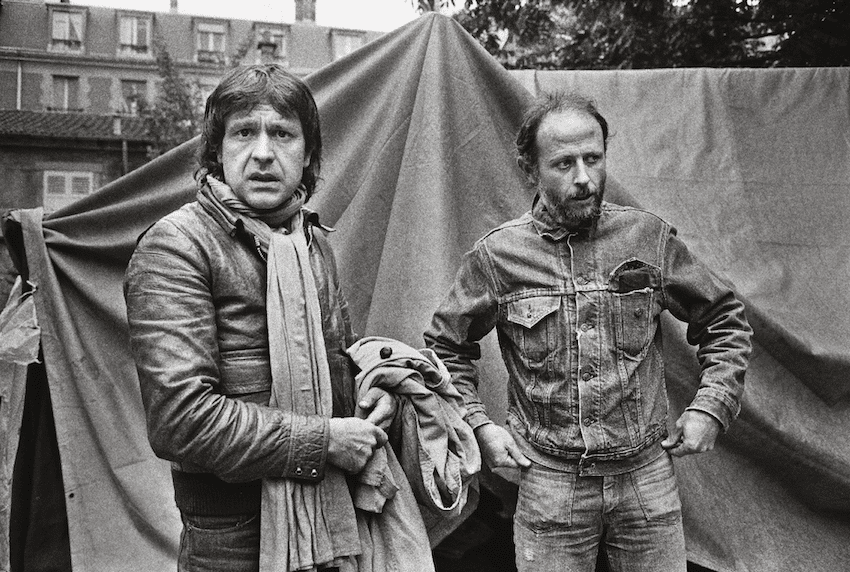 [May 31, 1976, Paris, Musique dans la ville festival, Square du Chanoine-Viollet, then Salle de la Mairie. Planned open-air concert with the members of The Trio: John Surman on saxophones, Barre Phillips on double bass and Stu Martin on drums, but the rain decided otherwise.…]
[May 31, 1976, Paris, Musique dans la ville festival, Square du Chanoine-Viollet, then Salle de la Mairie. Planned open-air concert with the members of The Trio: John Surman on saxophones, Barre Phillips on double bass and Stu Martin on drums, but the rain decided otherwise.…]
- I imagine he’s seen the photographs you’ve published of him in specialized magazines, and therefore has complete confidence in your approach.
There must have been times when he didn’t see himself that way. At the same time, Portal doesn’t always play easy, affordable jazz. He’s also a fan of free jazz. That’s his vision of things, just as my photographs reflect my vision of things.
I was with Portal not only at his shows, but often even leaving his house for the concert. I needed to share this intimate time with him.
- That’s it… It’s not just aesthetics that we’re looking for in music or photography, but emotion and truth. In neither case is it simple illustration. A true work of photographic reportage. A bit like my friend Michel Birot, the photographer who created the black & white Attitude Rugby magazines. He had the same vision as you: to photograph “Men at Work” not only on the pitch, but also in the dressing rooms and training rooms. What you’ve done here is a landmark work on Portal and the real life of a musician.
Yes, and as we’re not very young anymore, neither he nor I, this book will remain the reference book of his history. During our first conversation, before this interview, you called it a livre raisonné, is that right?
- Indeed, that’s what I thought when I read this impressive work. I had the impression of having in my hands a catalog raisonné of Michel Portal’s work by Guy Le Quérrec. This is something we see more often in the work of painters or certain photographers. But who is this fine book aimed at, primarily fans of photography? Or fans of jazz, and of Michel Portal’s work in particular?
I’d be inclined to say: to both, captain, my captain!
But obviously to anyone with a keen interest in Michel Portal’s work. I think this book will have a greater resonance in the years to come, in the sense that it’s a very rich and substantial work. But there could be many more books on Michel Portal. He’s played so much, he’s been going from concert to concert all his life. He’s an aerialist!
 [February 5, 1981, Sartrouville, Théâtre Gérard Philipe. The bandoneon, born in Germany and now a symbol of Argentine culture, is Michel Portal’s instrument of choice for another facet, always eagerly awaited by audiences, and even more so in concerts with Bernard Lubat]
[February 5, 1981, Sartrouville, Théâtre Gérard Philipe. The bandoneon, born in Germany and now a symbol of Argentine culture, is Michel Portal’s instrument of choice for another facet, always eagerly awaited by audiences, and even more so in concerts with Bernard Lubat]
- Yes, and he’s still creating. (We love his latest projects, like “MP85” with Bojan Z)..
Me too. But for the last 5 years I’ve kind of stopped following him… Too much fatigue… It’s heavy to carry photo bags! It also means a lot of travelling…
I do have one regret, though, and that’s not taking Michel Portal to Africa.
I did a report on the Lobi, an ethnic group in Burkina Faso. I would have liked him to play with them. The Lobi play the balafon. I was a bit chilly… not because of the temperature, of course, but because of the risk of such an expedition… I did it alone, but it remains a regret that I couldn’t get back there with Portal. Perhaps he’ll learn of my regret when he reads this interview?
- It’s never too late! But to change the subject, and since we’re a jazz magazine and a web radio (which puts the spotlight on photography whenever it can, but above all on jazz music – a major advantage over paper magazines, especially in this field: you can listen! What’s your favorite Michel Portal record or piece that we could listen to right now?
This kind of thing is always complicated… I usually run away!
But may be Dejarme solo !? like most of his concerts…. Yes it is! Dejarme Solo is the one I’d pick right now. It’s Hispanic style. Do you like the Hispanic touch? ?
- Ermously, like all the colors of jazz! Well, let’s hear it, dear Guy le Querrec. Let’s share this moment with our reader-listeners
- After this interlude, I’d like to ask a final question, which strays from the scope of the book but is just as much about the renowned Magnum photographer. What advice would you give to jazz-loving photographers who have chosen this particular field to practice their art?
To position your eye correctly, not to annoy the musicians and to be very curious. It’s this curiosity that has gradually led me to a greater intimacy with Michel Portal. This is evident throughout the book, from the first photos to the last. As our relationship grew, so did my curiosity and my work. It has to be said that he didn’t accept everyone like that so easily… It became, after a certain caution on his part about the way I operated, a friendship.
So this book clearly tells his story. And it is, I can tell you, one hell of a job! Patience, energy, hard work…
I believe in the future of this book…
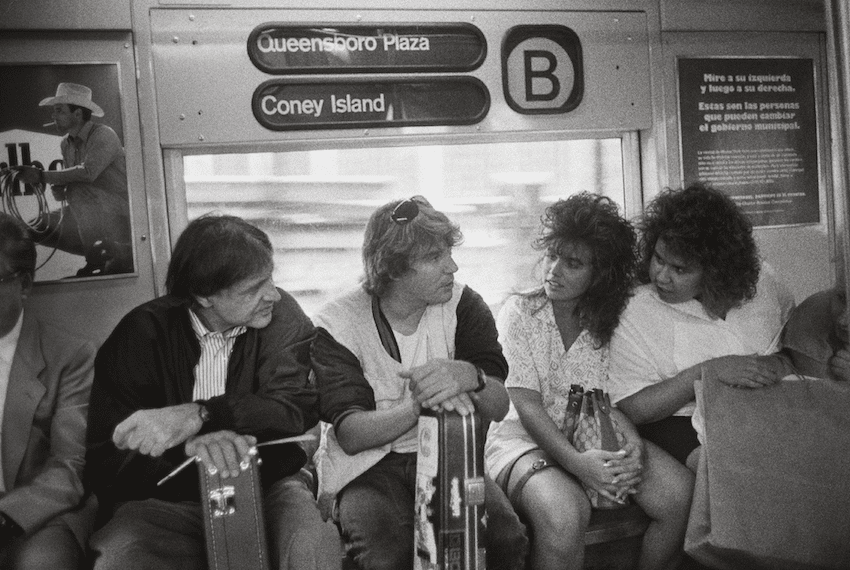
[June 28 1988, New York, Jazz français in New York … The day before the concert, for the camera, Michel Portal and violinist Didier Lockwood play buskers, chatting with passengers on the subway between Queensboro Plaza and Coney Island. At the Pacific Street subway station, back in town.…]
Translated with the help of www.DeepL.com/Translator (free version)






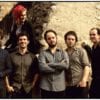

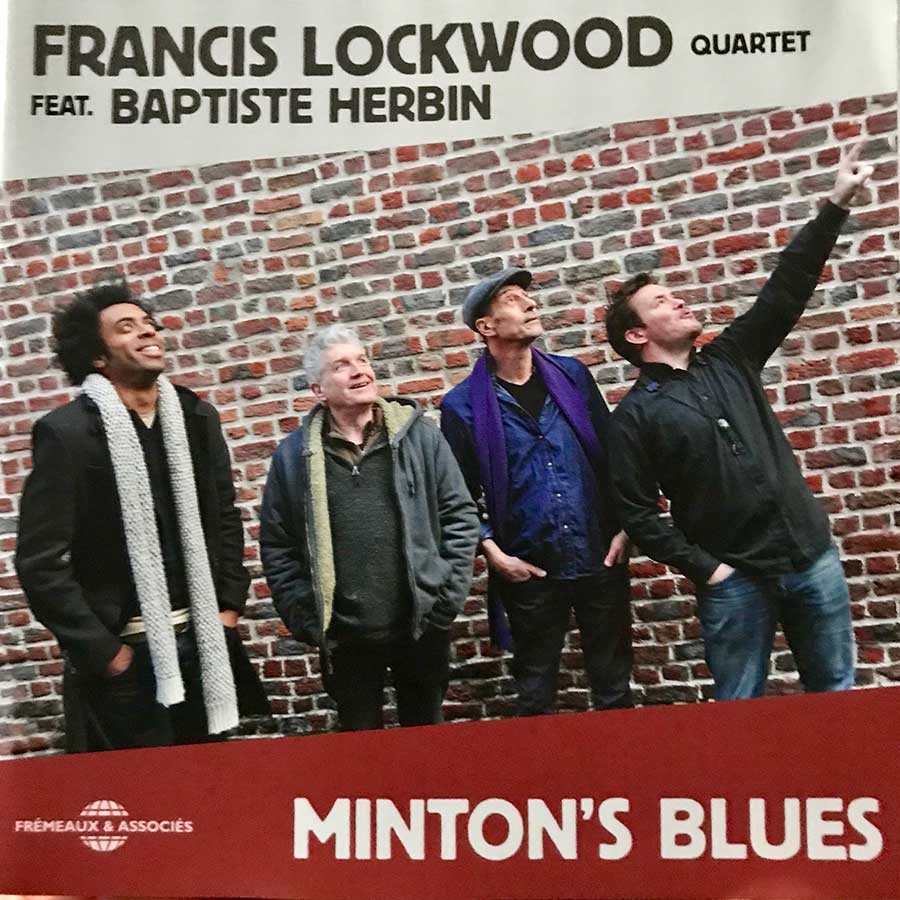

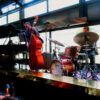
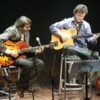

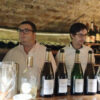

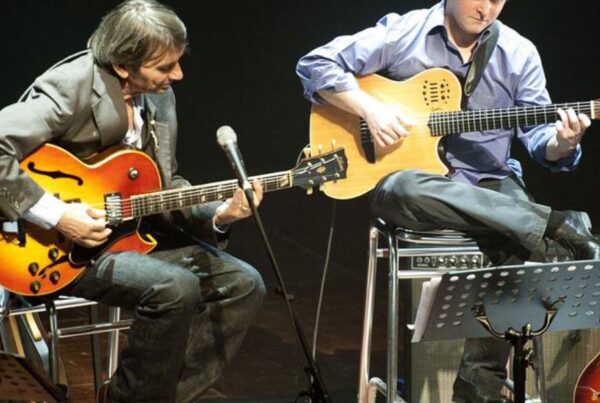
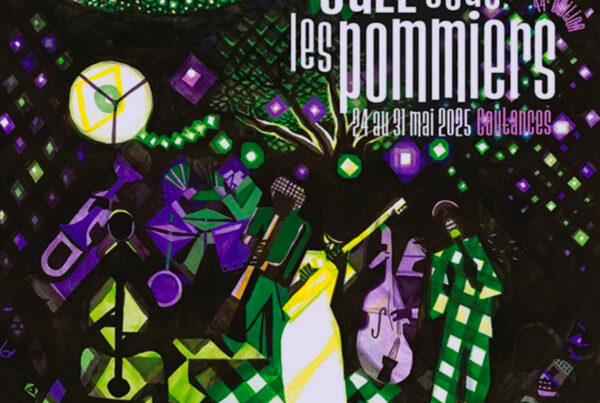



RECENT COMMENTS